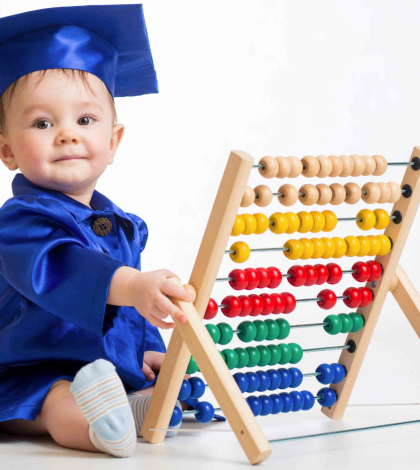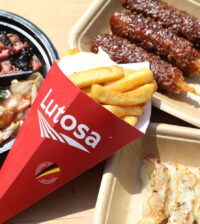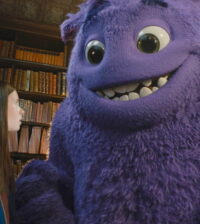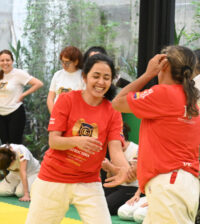- Belgium comes to Yamashita Park
- Residential Villa in Phuket Entices Remote Workers With Long-Stay Rates
- Rare pieces of French glass art at the Mirai Museum of Art
- Feast on fresh fish and seafood at the 2024 ‘Sakana’ Festival
- Would you like to ride in a Louis Vuitton gondola lift?
- Naked Snow Aquarium
- Festive lights at Yomiuriland will get you feeling the holiday vibes
Preschoolers should be learning these at school
 Economists acknowledge that high quality early education is one of the most important investment parents can make to empower their child to be a responsible part of society.
Economists acknowledge that high quality early education is one of the most important investment parents can make to empower their child to be a responsible part of society.
Steve Barnett, director of the National Institute for Early Education Research at Rutgers University in the United States says social inequality has to do with lack of early childhood education. He warns that kids who skip preschool before starting kindergarten are ‘going to be in a spiral of failure.’
There have been numerous debates in Japan as well as in other countries on how early education programs can further be improved to achieve a high learning outcome.
What exactly makes a Pre-Kindergarten curriculum high quality is open to debate. Parents who did preschool understand by experience its long-term advantages and are likely to want the same for their own children.
If you are shopping for a preschool for your child (or he/she is currently enrolled in one) and feel the need to be able to tell a strong curriculum from weak, here are some points of reference against which you can make comparisons between different curricula and assess what school would be a good fit for your preschooler.
Here are the basic things that are taught in a Pre-K classroom for kids ages 3 – 5.
Children are introduced to numbers, counting objects, recognizing sizes, colors and shapes, and basic addition and subtraction.
Common activities
✓ Counting objects, one at a time, using one number name for each object up through 10.
✓ Counting out loud from 1 through 10 (or beyond)
✓ Recognizing numbers by spelling from 1 through 10.
✓ Answer “how many?” questions about groups of objects.
✓ Sorting objects into groups by shape, color or size. Re-sort objects into different groups – for example, after sorting blocks by size, pairing objects by shape, color or size.
✓ Developing awareness of numbers in everyday life, and thinking through answers to questions about what the numbers tell them.
✓ Recognizing basic number facts, such as 1 and 1 is 2. Use of fingers, blocks or other objects to answer questions such as: If you have two 10 yen coins, and I give you two more, how many ten yen coins do you have?
✓ Identifying shapes in the classroom, the playground, outside, and at home – for example: books, bento trays and dishes, street signs, windows and doors, etc. Creating and building shapes using clays, blocks, lego pieces, puzzles, etc. Playing and building objects, then identifying the positions and direction of shapes using descriptive words like on, off, over, under, on top, on bottom, over, under, in front of, behind, above, below, etc.
✓ Finding patterns in what they see around them – for example, prints in clothes, wallpaper, arrangement of petals on a flower. Creating patterns by arranging or building with blocks, making paper chains or stringing beads, drawing or coloring, etc. They also work on duplicating patterns, and extending simple patterns.
✓ Understanding measurement as “how many” units of the same size. Identify different things in everyday life that are measured and why – for example, how long a foot is (to get the right size shoe; how cold it is outside so we know if we need a sweater or coat; how much milk to put to follow the pancake recipe.
✓ Understanding the concept of time by using a timer for activities like using the tablet etc. so that your child becomes familiar with how long different units of time last. If your child doesn’t want to leave the playground, tell her she can stay for 5 more minutes.
✓ Using language to express a variety of ideas and needs, like telling a story, explaining, or making a request.
✓ Speaking in increasingly complex ways for example, expanding sentences to say something or ask ‘who or what’ questions.
✓ Joining in classroom conversations, and using skills like taking turns speaking and responding to what a peer has to say.
✓ Exploring sounds for example to detect the beginning and ending sounds of familiar words and names, or listen for words that rhyme.
✓ Learning about letters of the alphabet; for example, recognizing and naming letters associated with a sound or sounds, and name some of those sounds including signs and logos.
✓ Understanding that writing moves from left to right and top to bottom, and that letters are grouped to form words.
✓ Developing enthusiasm for books; for example, pretend to read a book, or listen and react to stories read aloud. Ask and answer questions about a story, or retell information using words, pictures, or movement
✓ Understanding how books work; for example, how to hold a book correctly, turn the pages from front to back, and recognize features such as the title or author.
✓ Engaging with stories, poems, plays, and informational books read aloud.
✓ Copying, tracing, or independently writing letters.
All the above activities (and there maybe more) are designed to open learning pathways in the brain that will form the foundation for future academic levels. The child will be learning to speak and communicate in new ways and begin to discover books, understand how numbers work and hear and understand language through conversations, stories, and songs. As they explore books, Preschoolers are also laying a firm foundation on reading and writing.














